It looks like you're using an Ad Blocker.
Please white-list or disable AboveTopSecret.com in your ad-blocking tool.
Thank you.
Some features of ATS will be disabled while you continue to use an ad-blocker.
share:
I am sure that I do not have to go into details about the weird weather we have been having, but if there is anything else that I have noticed its how
the weather channels and such are becoming increasingly nonchalant about the weather as well.
So I decided to share some information about the weather that is as simple as knowing the clouds, paying attention to the animals, and just some old fashioned know how.
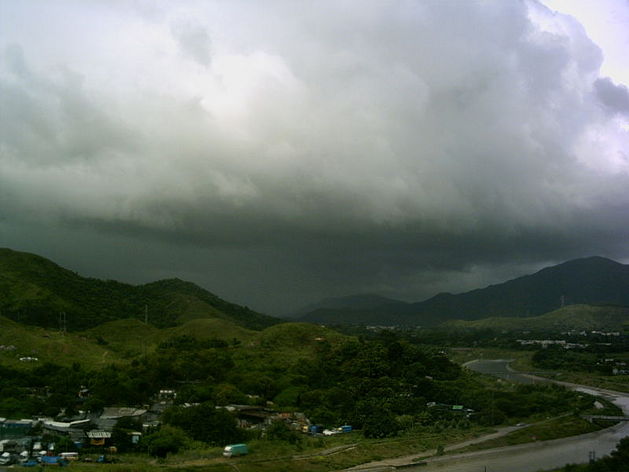
Cumulonimbus clouds early in the day and developing throughout the day can mean greater chances of severe weather.

Mammatus cloud (formed by sinking air) can form with both severe and non-severe thunderstorms as well as other cloud types.
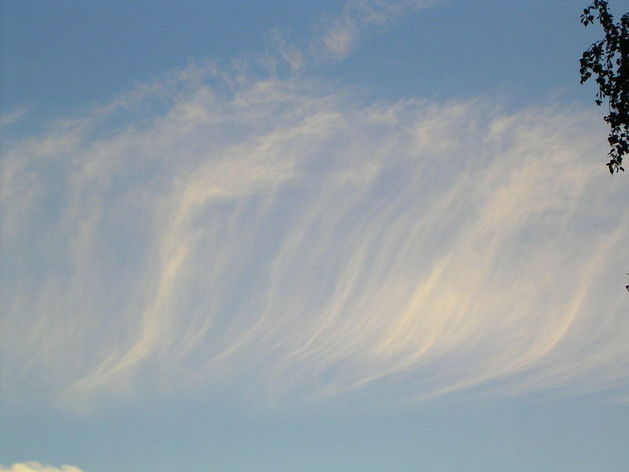
Cirrus clouds, high in the sky like long streamers, mean bad weather within the next 36 hours.

Altocumulus clouds, which are like mackerel scales, also "mean" bad weather within the next 36 hours. The old sailor's saying for these types of clouds is "Mares tails and mackerel scales, tall ships carry short sails." Another is "Mackerel skies and mare's tails, sailors furl their sails." Mackerel skies and mares tails formations sometimes appear in the same sky. When that happens, rain is sure to follow the next day.
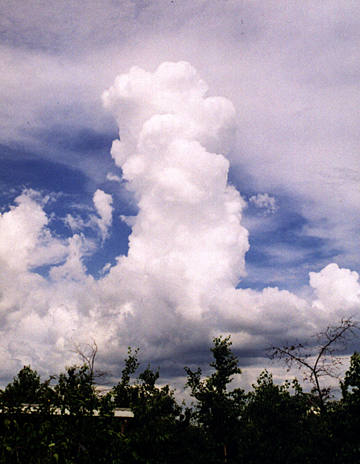
Cumulus towers indicate the possibility of showers later in the day.
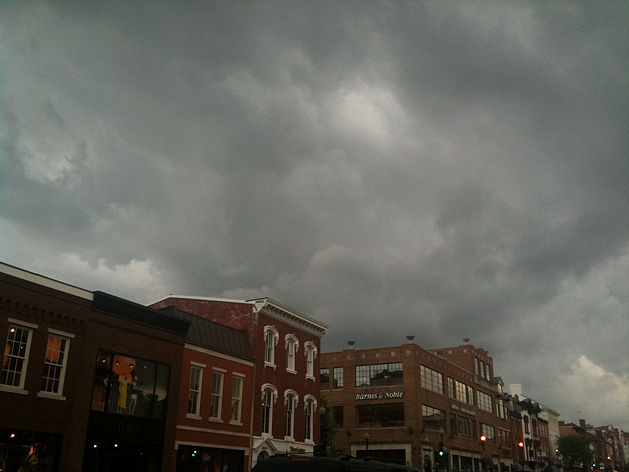
Nimbostratus clouds hang low and heavy in the sky, and mean rain is imminent.
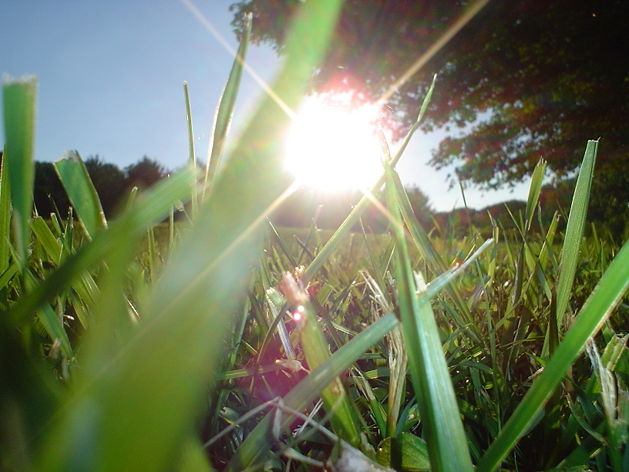
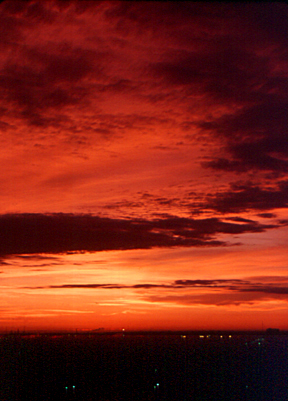
If you see a red sky during sunset (when you're looking to the west), there is a high pressure system with dry air that is stirring dust particles in the air, causing [[the sky to look red. Since prevailing front movements and jet streams weather usually move from west to east (see Tips), the dry air is heading towards you. A red sky in the morning (in the East, where the sun rises) means that the dry air has already moved past you, and what follows behind it (on its way towards you) is a low pressure system that carries moisture].
www.wikihow.com...
And here are a few other places that can help with weather detection.
www.ussartf.org...
www.rd.com...
www.almanac.com...
I am sure there are many people out there that have heard old wives tales and believe me when I tell you that some of those things whether at one time or another we thought they were outdated at this point doesnt really matter, with this kind of weather any and all information is important and should be looked into.
Peace, NRE.
So I decided to share some information about the weather that is as simple as knowing the clouds, paying attention to the animals, and just some old fashioned know how.
Look at the clouds. The types of clouds in the sky, as well as the direction in which they're moving, can potentially tell you a lot about upcoming weather.
Clouds going in different directions (e.g. one layer going west, another layer going north) means bad weather is coming.
Cumulonimbus clouds early in the day and developing throughout the day can mean greater chances of severe weather.

Cumulonimbus clouds early in the day and developing throughout the day can mean greater chances of severe weather.

Mammatus cloud (formed by sinking air) can form with both severe and non-severe thunderstorms as well as other cloud types.

Cirrus clouds, high in the sky like long streamers, mean bad weather within the next 36 hours.

Altocumulus clouds, which are like mackerel scales, also "mean" bad weather within the next 36 hours. The old sailor's saying for these types of clouds is "Mares tails and mackerel scales, tall ships carry short sails." Another is "Mackerel skies and mare's tails, sailors furl their sails." Mackerel skies and mares tails formations sometimes appear in the same sky. When that happens, rain is sure to follow the next day.

Cumulus towers indicate the possibility of showers later in the day.

Nimbostratus clouds hang low and heavy in the sky, and mean rain is imminent.
Check the grass for dew at sunrise. If the grass is dry, this indicates clouds or strong breezes, which can mean rain. If there's dew, it probably won't rain that day. However, if it rained during the night, this method will not be reliable.

Look for a red sky. Remember the rhyme: "Red sky at night, sailor's delight; Red sky at morning, sailors take warning." Look for any sign of red in the sky (not a red sun); it will not be a bold orange or red the majority of the time, but that depends a little on where you live.

If you see a red sky during sunset (when you're looking to the west), there is a high pressure system with dry air that is stirring dust particles in the air, causing [[the sky to look red. Since prevailing front movements and jet streams weather usually move from west to east (see Tips), the dry air is heading towards you. A red sky in the morning (in the East, where the sun rises) means that the dry air has already moved past you, and what follows behind it (on its way towards you) is a low pressure system that carries moisture].
Look for a rainbow in the west. This is the result of the rising sun's morning rays from the east striking moisture in the west. Most major storm fronts in the Northern Hemisphere travel west to east, and a rainbow in the west means moisture, which can mean rain is on its way. On the other hand, a rainbow in the east around sunset means that the rain is on its way out and you can look forward to sunny days. Remember: Rainbow in the morning, need for a warning.
Observe animals. They are more likely to react to changes in air pressure than we are.
If birds are flying high in the sky, there will probably be fair weather. (Falling air pressure caused by an imminent storm causes discomfort in birds' ears, so they fly low to alleviate it. Large numbers of birds roosting on power lines indicates swiftly falling air pressure.)
Seagulls tend to stop flying and take refuge at the coast if a storm is coming.
Animals, especially birds, get very quiet immediately before it rains.
Cows will typically lie down before a thunderstorm. They also tend to stay close together if bad weather's on the way.
Ants build their hills with very steep sides just before a rain.
Cats tend to clean behind their ears before rain.
Turtles often search for higher ground when a large amount of rain is expected. You will often see them in the road during this period (1 to 2 days before the rain).
A very old wives tale says if birds feed in a storm it will rain for a long time, if they don't it will clear soon.
www.wikihow.com...
And here are a few other places that can help with weather detection.
www.ussartf.org...
www.rd.com...
www.almanac.com...
I am sure there are many people out there that have heard old wives tales and believe me when I tell you that some of those things whether at one time or another we thought they were outdated at this point doesnt really matter, with this kind of weather any and all information is important and should be looked into.
Peace, NRE.
If you have a barometer, or make your own (very easy to do), you can predict the weather pretty well, especially if you pay attention to the clouds on
top of it.
www.wikihow.com...
www.wikihow.com...
I find studying cloud movements on satellite feeds is quite effective when it comes to predicting weather.
I'm located in central Europe and I always observe the remnants of hurricanes coming over the Atlantic ocean from the USA. Takes about a week to ten days for the weather system to arrive here.
It's quite interesting to watch.
I'm located in central Europe and I always observe the remnants of hurricanes coming over the Atlantic ocean from the USA. Takes about a week to ten days for the weather system to arrive here.
It's quite interesting to watch.
White oak tree leaves flip over a couple of hours before it is going to rain.so watch around your aera for a tree that looks a little bit more white
than the rest when you know its going to rain then you have identified a white oak and can use it for your own reference
reply to post by NoRegretsEver
I've always just watched the bugs and the birds. My great grandmother never watched a weather report in her life and always knew when the
weather was going to change by doing so, and I learned long ago that it was a far more accurate way of predicting the weather than by anything they
have to say on TV or the radio. Also since I've gotten older my knee is just as accurate at predicting rain or cold as the bugs and birds. Getting
older.....a blessing AND a curse!
I mostly made this thread as I live out in a very rural area, and if the weather is bad enough I will lose internet connection, and I though I have
television I use it for PBS only.
For those that are in the same boat, you can also PDF the link and this thread for future reference, Firefox and Chrome have this app, and you can check it offline. I made the links into a PDF and put it on my desktop, so when Im not sure what clouds do or show what, I can easily open it, and see them for reference with or without internet access.
Peace, NRE.
For those that are in the same boat, you can also PDF the link and this thread for future reference, Firefox and Chrome have this app, and you can check it offline. I made the links into a PDF and put it on my desktop, so when Im not sure what clouds do or show what, I can easily open it, and see them for reference with or without internet access.
Peace, NRE.
reply to post by WaterBottle
Good thinking, a barometer is not hard to build and could really come in handy - such as approaching low or high pressure systems.
Good thinking, a barometer is not hard to build and could really come in handy - such as approaching low or high pressure systems.
reply to post by NoRegretsEver
Great thread NRE. I have observed many times eradict weather and unsual clouds. Its difficult to know whether they are normal occurring weather anomalies or not.
Heres a Nasa satellite photo showing Ufos causing clouds to form a wake pattern.

Great thread NRE. I have observed many times eradict weather and unsual clouds. Its difficult to know whether they are normal occurring weather anomalies or not.
Heres a Nasa satellite photo showing Ufos causing clouds to form a wake pattern.

reply to post by NoRegretsEver
Very informative and interesting thread! I remember my dad telling me the the quote of "red sky at night, sailors delight and red sky in the morning, sailors warning" it has stuck with me. The mackerel scales verse I never heard of before though.
Another one my dad taught me is that if you see a ring around the moon, then there will be rain within the next three days.
Very informative and interesting thread! I remember my dad telling me the the quote of "red sky at night, sailors delight and red sky in the morning, sailors warning" it has stuck with me. The mackerel scales verse I never heard of before though.
Another one my dad taught me is that if you see a ring around the moon, then there will be rain within the next three days.
I love educational, USEFUL, threads!! S&F!
No amount of technology can top mother nature, here's a link with a list of examples of animal behavior prior to one of the worst tsunamis on record...Here is the link :-P
No amount of technology can top mother nature, here's a link with a list of examples of animal behavior prior to one of the worst tsunamis on record...Here is the link :-P
Thanks for the info & topic Op
Another way of knowing that its going to rain is when there is no ants around. Or when you see the ants start working together to construct and build dam walls around the entrances to their nests...We can also know how much rain to expect based on how high the ants build their dam walls around their nests entrances.
Another way of knowing that its going to rain is when there is no ants around. Or when you see the ants start working together to construct and build dam walls around the entrances to their nests...We can also know how much rain to expect based on how high the ants build their dam walls around their nests entrances.
Very interesting and informative!! I'll make sure to look at the clouds more often for a sign of weather to come. Thanks!!
I think some people, especially when you live in an area for a long time, just "sense" the weather. I always seem to know when it's going to rain
that day, or even other weather issues. It may even be subconsciously watching the birds, tops of trees, or just the tinge of ozone in the air, etc.
Also, those with muscle conditions have more pain when the pressure drops too, so they know when a storm is coming.
If you see a red sky during sunset (when you're looking to the west), there is a high pressure system with dry air that is stirring dust particles in the air, causing [[the sky to look red. Since prevailing front movements and jet streams weather usually move from west to east (see Tips), the dry air is heading towards you. A red sky in the morning (in the East, where the sun rises) means that the dry air has already moved past you, and what follows behind it (on its way towards you) is a low pressure system that carries moisture].
This part is incorrect. The sky turning red doesnt have anything to do with dust in the atmosphere. It is because of Rayleigh Scattering. Other than that, a good thread.
I would contribute more but i have limited time!
edit on 31/5/13 by jrmcleod because: (no reason given)
reply to post by Gazrok
Your not wrong there Gazrock, I have lived i the country all my life, and have had the same ability, when you live as PART of the land instead of just on it, you learn to feel the weather in a way that is so much more accurate than any so called meteorological report.
It always makes me chuckle when i say to people "It's gonna Chuck it down inside an hour"
"who told you that" they ask
"Mother Nature" this is usually met with the "your a raving lunatic Stare"
"Rubbish" they say "the weather girl on the TV said its going to be dry all day"
Sure enough, less than an hour later, they are all Drenched and cursing the Weather girl on the idiot box.
The earth will talk to you if you stop and listen long enough to hear it
Your not wrong there Gazrock, I have lived i the country all my life, and have had the same ability, when you live as PART of the land instead of just on it, you learn to feel the weather in a way that is so much more accurate than any so called meteorological report.
It always makes me chuckle when i say to people "It's gonna Chuck it down inside an hour"
"who told you that" they ask
"Mother Nature" this is usually met with the "your a raving lunatic Stare"
"Rubbish" they say "the weather girl on the TV said its going to be dry all day"
Sure enough, less than an hour later, they are all Drenched and cursing the Weather girl on the idiot box.
The earth will talk to you if you stop and listen long enough to hear it
You can tell a lot about changing weather conditions with a barometer, wind speed gauge (or just a wind sock), weather vane, thermometer, humidity
sensor and rain guage.
new topics
-
Thousands Of Young Ukrainian Men Trying To Flee The Country To Avoid Conscription And The War
Other Current Events: 2 hours ago -
12 jurors selected in Trump criminal trial
US Political Madness: 5 hours ago -
Iran launches Retalliation Strike 4.18.24
World War Three: 5 hours ago -
Israeli Missile Strikes in Iran, Explosions in Syria + Iraq
World War Three: 6 hours ago -
George Knapp AMA on DI
Area 51 and other Facilities: 11 hours ago -
Not Aliens but a Nazi Occult Inspired and then Science Rendered Design.
Aliens and UFOs: 11 hours ago
top topics
-
George Knapp AMA on DI
Area 51 and other Facilities: 11 hours ago, 25 flags -
Israeli Missile Strikes in Iran, Explosions in Syria + Iraq
World War Three: 6 hours ago, 14 flags -
Louisiana Lawmakers Seek to Limit Public Access to Government Records
Political Issues: 14 hours ago, 7 flags -
So I saw about 30 UFOs in formation last night.
Aliens and UFOs: 17 hours ago, 6 flags -
Iran launches Retalliation Strike 4.18.24
World War Three: 5 hours ago, 6 flags -
Not Aliens but a Nazi Occult Inspired and then Science Rendered Design.
Aliens and UFOs: 11 hours ago, 5 flags -
12 jurors selected in Trump criminal trial
US Political Madness: 5 hours ago, 4 flags -
The Tories may be wiped out after the Election - Serves them Right
Regional Politics: 15 hours ago, 3 flags -
Thousands Of Young Ukrainian Men Trying To Flee The Country To Avoid Conscription And The War
Other Current Events: 2 hours ago, 3 flags
active topics
-
The Tories may be wiped out after the Election - Serves them Right
Regional Politics • 22 • : andy06shake -
Mandela Effect - It Happened to Me!
The Gray Area • 109 • : ArMaP -
Thousands Of Young Ukrainian Men Trying To Flee The Country To Avoid Conscription And The War
Other Current Events • 1 • : stosh64 -
Mood Music Part VI
Music • 3058 • : Hellmutt -
Fossils in Greece Suggest Human Ancestors Evolved in Europe, Not Africa
Origins and Creationism • 60 • : whereislogic -
Scarface does Tiny Desk Concert
Music • 7 • : sitrose -
The Acronym Game .. Pt.3
General Chit Chat • 7727 • : F2d5thCavv2 -
Russia Ukraine Update Thread - part 3
World War Three • 5697 • : F2d5thCavv2 -
Do we live in a simulation similar to The Matrix 1999?
ATS Skunk Works • 22 • : SchrodingersRat -
Iran launches Retalliation Strike 4.18.24
World War Three • 15 • : semperfortis
